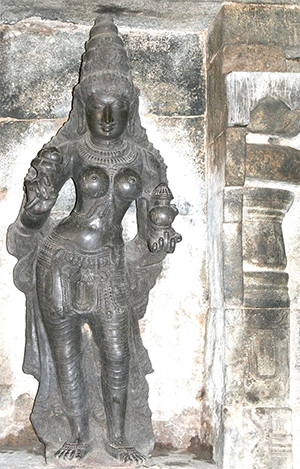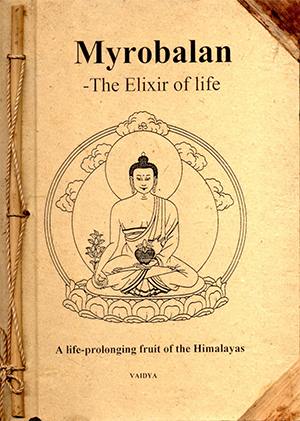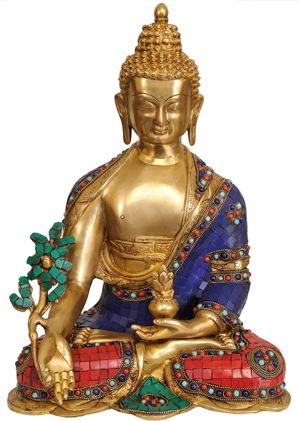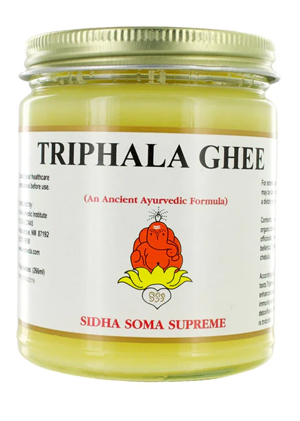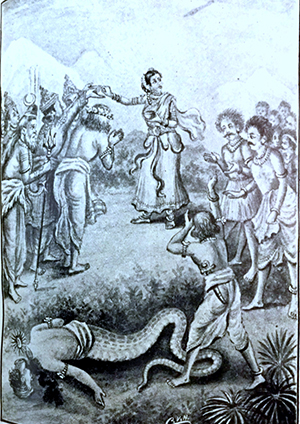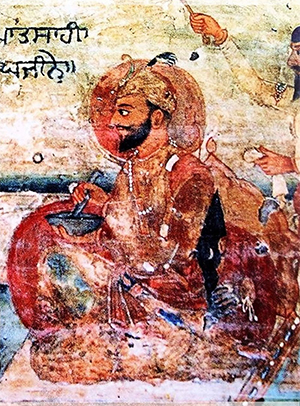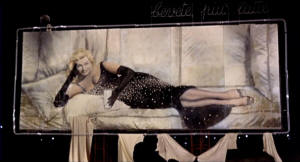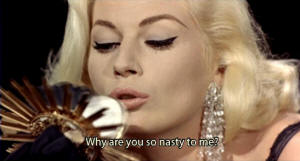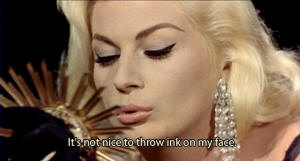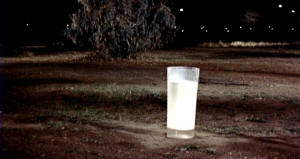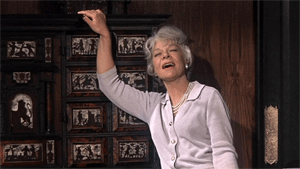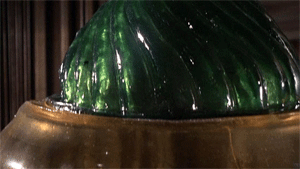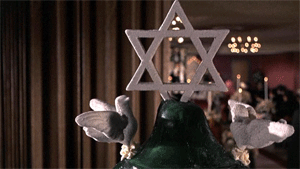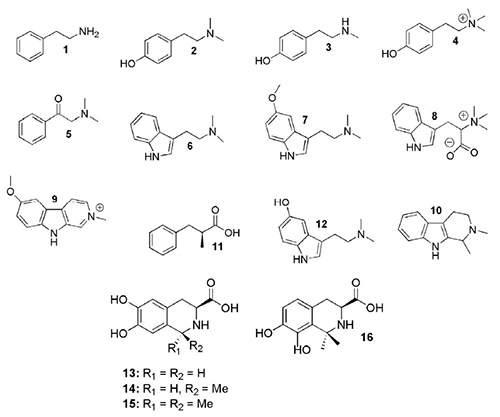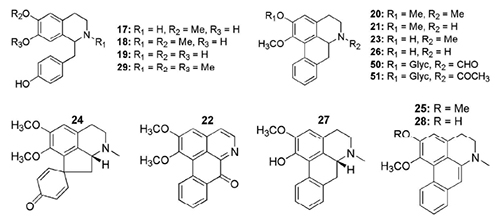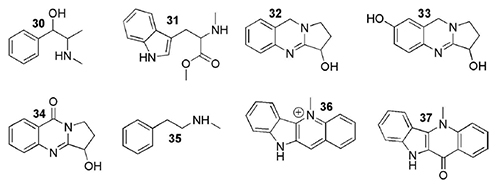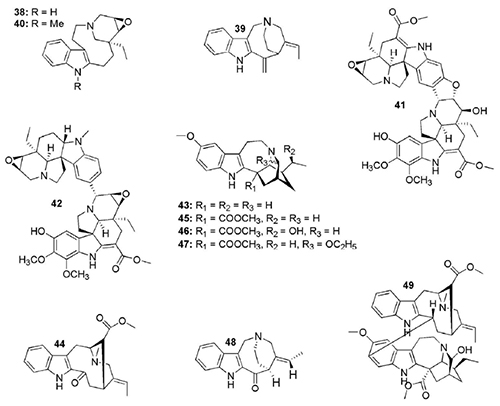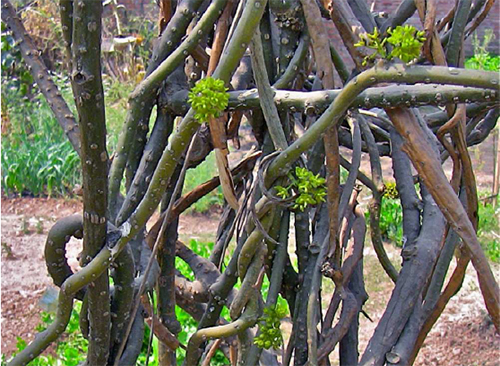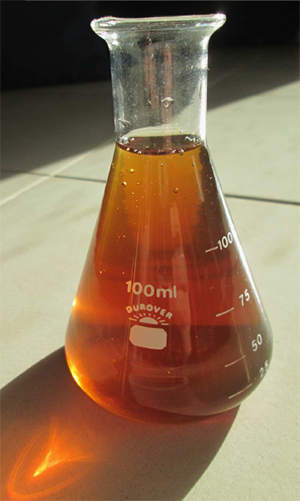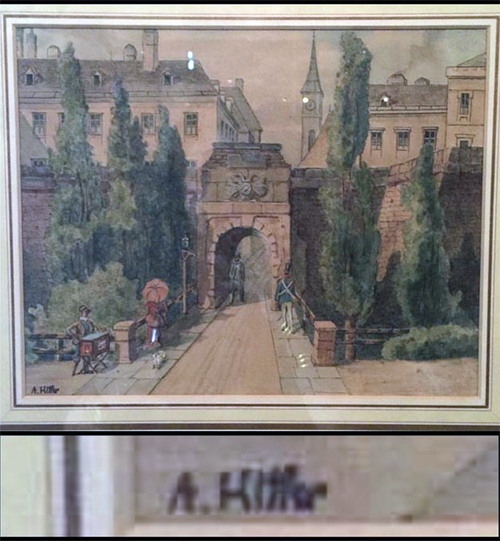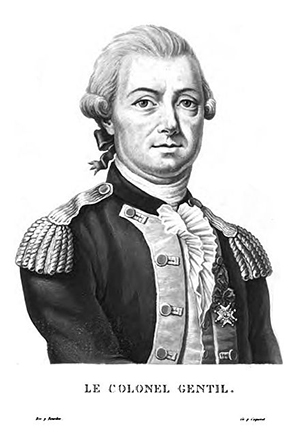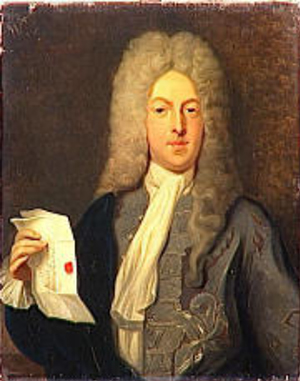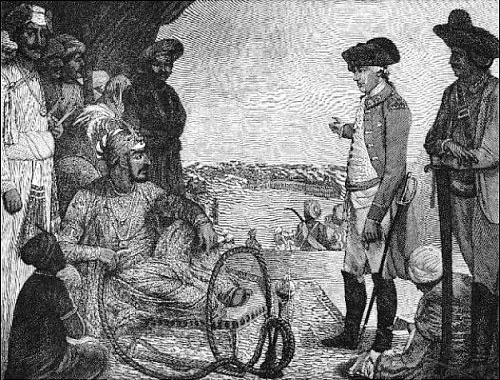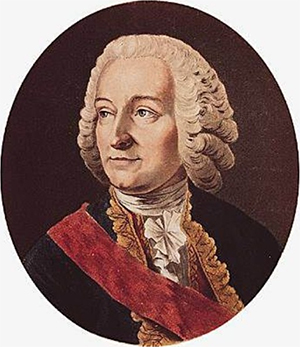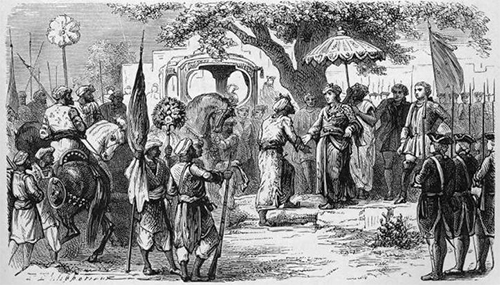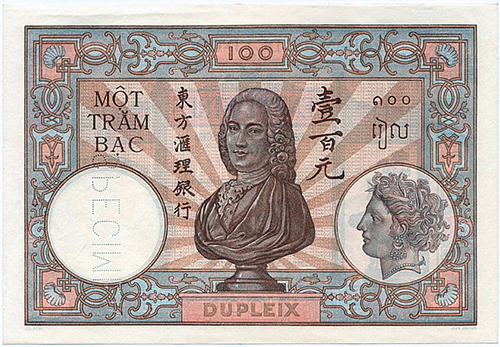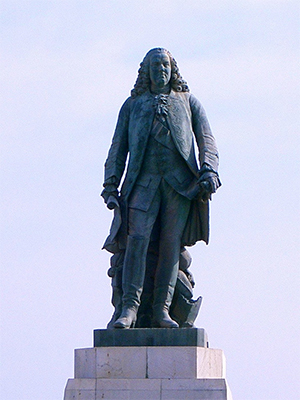Kayastha [Kayasth] [Cayast’ha] [Koyt] [Caits] [Karanika] [Karana] [Writing Caste]
by Wikipedia
Accessed: 3/10/23
The Making of an Ur-Text
One can imagine how delighted Holwell must have been to find such stunning similarities between the description of India's ancient religious texts and Ilive's vision. But the doctrines that had been translated or summarized from old texts by the likes of Roger, Baldaeus, and the Catholic missionaries showed little similarity with this. All of it seemed "very defective, fallacious, and unsatisfactory" to Holwell, in fact, no more than "unconnected scraps and bits, picked up here and there by hearsay" from ignorant Hindoos rather than solid "literal translations" (Holwell1765:I.5-6). Hence the need to "rescue" this distant nation "from the gross conceptions entertained of them by the multitude" (p. 9) and "to vindicate them" by "a simple display of their primitive theology" (Holwell 1767: Dedication). Disgusted by all these misunderstandings and misrepresentations (1767.2:4), converted by Ilive's theory of delinquent angels, and possibly already fascinated by Ramsay's vision of Ur-tradition, Holwell collected materials about the Gentoo religion and "on his departure from Bengal in the year 1750 imagined himself well informed in the Gentoo religion" about which he had learned through "conversations with the Bramins of those Bhades who were near" (pp. 63-64). He had already thought of writing a book about this but did not find the time (p. 64). Given the fact that he already had such a plan, it is likely that during his stays in Europe he also collected relevant Western literature about India and its religions. If he was not already acquainted with Ramsay and Couto before, he must have studied them after his return to India in 1751 and as a result gained a rather precise idea of what he was looking for. If Holwell was trying to find the Vedas, he was not alone; but Couto's description of the first Veda, which seemed so similar to Ilive's ideas, certainly brought more motivation and focus to his search. He knew that he was looking for an extremely ancient scripture treating of God, the creation Story, angels and their fall, the immortality of souls, the purification of delinquent angels in human bodies, transmigration, the punishment of evil and reward of good, and remission and salvation.
What could happen when a wealthy foreigner was trying to locate such information in old Indian texts is exemplified by the case of Francis WILFORD (1761?-1822), a respected member of the Asiatic Society of Bengal who lived in India four decades after the sack of Calcutta rang in the British Empire. Unlike Holwell, Wilford had studied Sanskrit. He was intent on proving on the basis of Indian texts that India and Egypt had from ancient times been in close contact and that their religions came from a common source. Since that source was, of course, ultimately Noah's ark, Wilford had Indian assistants look for a precise set of topics: the deluge, the name of Noah and his sons, and so forth. Like Holwell some decades before him, Wilford had to tell a learned Indian what he was looking for "as a clue to guide him," and for several years he faithfully translated what this Indian guru gave him. But suddenly he detected that he had fallen victim to fraud:In order to avoid the trouble of consulting books, he conceived the idea of framing legends from what he recollected from the Puranas, and from what he had picked up in conversation with me. As he was exceedingly well read in the Puranas, and other similar books ... it was an easy task for him; and he studied to introduce as much truth as he could, to obviate the danger of immediate detection .... His forgeries were of three kinds; in the first there was only a word or two altered; in the second were such legends as had undergone a more material alteration; and in the third all those which he had written from memory. (Wilford 1805:251)
The output of this Indian expert was quite astonishing, and the most famous example shows what good remuneration, a sense of what the customer is looking for, and skill in composition can achieve. The learned Indian composed a story "which in nine Sanskrit verses ... reprises the story of Noah, his three sons, and the curse of Ham" and convinced no less a man than William Jones that Noah and his three sons figured in genuine Indian Puranas (Trautmann 1997:90-91). Wilford described how his Indian teacher proceeded in this case:It is a legend of the greatest importance, and said to be extracted from the Padma. It contains the history of NOAH and his three sons, and is written in a masterly style. But unfortunately there is not a word of it to be found in that Purana. It is, however, mentioned, though in less explicit terms, in many Puranas, and the pandit took particular care in pointing out to the several passages which confirmed, more or less, this interesting legend. Of these I took little notice, as his extract appeared more explicit and satisfactory. (Wilford 1805:254)
Since Wilford had told his pandit exactly what he was looking for, the forger produced an ingenious narrative that presented elements of the story of Noah and his sons in an Indian dress and included some surprising details such as "the legend about the intoxication of NOAH" which, as Wilford now realized, "is from what my pandit picked up in conversation with me" (p. 254). In all, this man "composed no less than 12,000 brand new Puranic slokas -- about half the length of the Ramayana! -- and inserted them into manuscripts of the Skanda and Brahmanda Purana" (Trautmann 1997:92). This was a fraud committed on a man who was far more learned than Holwell; the texts were in Sanskrit, not Hindi; and the source texts could be verified.
In Holwell's case, there is always the possibility that his description of Veda content led some knowledgeable Indian to the very texts that Azevedo had used for the description that Couto plagiarized and Roger and others then used. Caland (1918:49-50) concluded on the basis of the book titles mentioned by Couto that these texts were Saivite Agamas; but an able Indologist would need to substantiate this not just by titles but by contents. While it is possible that similar texts in Hindi were sold to Holwell, I think that the likelihood of a fraud is greater. If Holwell, ready as he was to spend almost any amount of money on this text after the 1756 loss, could not manage to recuperate more than a few fragments -- or, more likely, nothing at all -- one would think that the people who sold it to him in the first place had produced only two slightly different manuscripts and, having sold them to Holwell, were in no position to repeat that feat. If Holwell's text had been available to various people, then someone would probably have sold it to him, especially given the fact that for a while he was governor of Bengal and certainly did not lack the means to get what he wanted.
But who could have forged such a text? Since Holwell remarked that members of the tribe of writers [Kayastha; Kayasth; Karanika; Karana; Writing Caste] "are often better versed in the doctrines of their Shastah than the common run of the Bramin themselves" (Holwell 1767:2.21) and that "a few others of the tribe of the Batteezaaz Bramins ... can read and expound from the Chatah Bhade [Text II], which still preserved the text of the original [Text I)" (p. 15), the culprit(s) might have come from either or both of these groups.
-- The Birth of Orientalism, by Urs App
2. Cayast’ha or Koyt.
The children of a Cshatriya father and a Vaisya mother are Cayast’has, (Caits,) commonly called the Writer Caste by Europeans. Most of this Caste can read and write; several practice medicine; many are merchants, tradesmen, farmers, &c. Though not so numerous as the Brahmans, they are, as a body, more wealthy. They perform the same daily religious ceremonies as the Brahmans, but use prayers taken from the Tantras. Some authorities seem to consider them as pure Sudras (As. Res. v. 58).
-- Encyclopædia metropolitana; or, Universal dictionary of Knowledge, on an Original Plan: Comprising the Twofold Advantage of a Philosophical and an Alphabetical Arrangement, with Appropriate Engravings. Edited by The Rev. Edward Smedley, M.A., Late Fellow of Sidney College, Cambridge; The Rev. Hugh James Rose, B.D., Principal of King’s College, London; and The Rev. Henry John Rose, B.D., Late Fellow of St. John’s College, Cambridge. Volume 16. 1845
3. – Dinagepour, called also the havillee of the circar of Penjerah, and sometimes classed with Edrackpoor, under the head of Arungabad, was conferred by Jaffier Khan, like all the other great zemindarries, towards the latter end of his government, in the first instance, on a very intelligent landholder of the caste of koyt or writer, named Ramnaht, originally from upper Hindostan. This man was supposed to have acquired great wealth by the discovery of buried treasure, in digging tanks for the improvement of agriculture; and had therefore repeated application from the nazim for pecuniary aids, under the real or feigned distresses of the State. The truth may be, that by amelioration and good management, in rendering productive the extensive wastes within the circle of his jurisdiction, or secret enlargement of his frontiers on all sides, particularly towards Cooch Behar, he might have realized the necessary operation of husbandry, conducted with intelligence, industry or good fortune. But however this may have been, by personal address, and anticipating the wants or desire of the sovereign representative, in paying large douceurs over and above his current revenue, he enjoyed the annual special privilege of administering internally his own district, without being subject like the zemindars, to either hustabood investigations, on the immediate control of a Mussulman aumildar. Nor did these extraordinary exemptions cease entirely before the year 1757, when a new revolution having strengthened the efficient powers of government, and politically increased the public expenses, through the necessity of maintaining a regular standing military establishment, it was found expedient to resume the equitable, indispensible rights of royalty, by bringing into the exchequer the ascertained surplus exaction levied from the country by the farming collector, and hitherto fraudulently kept for his proper use. Originally this zemindarry, exclusive of jageers, consisted of pergunnahs 89, yielding 4,62,964.
-- The Zemindarries in 1728, from The Fifth Report from the Select Committee on the Affairs of the East India Company, Volume 1, Bengal Presidency. 1812
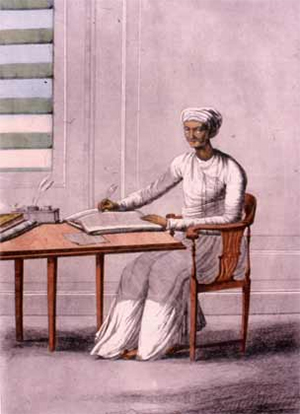
"Calcutta Kayastha", a late 18th-century depiction by Frans Balthazar Solvyns
Subdivisions: Bengali Kayastha, Chandraseniya Kayastha Prabhu, Chitraguptavanshi Kayastha and Karana
Minority: Islam[1]
Kayastha (also referred to as Kayasth) denotes a cluster of disparate Indian communities broadly categorised by the regions of the Indian subcontinent in which they were traditionally located—the Chitraguptavanshi Kayasthas of North India, the Chandraseniya Kayastha Prabhus of Maharashtra, the Bengali Kayasthas of Bengal and Karanas[2][3] of Odisha. All of them were traditionally considered "writing castes", who had historically served the ruling powers as administrators, ministers and record-keepers.[4][5]
The earliest known reference to the term Kayastha dates back to the Kushan Empire,[6] when it evolved into a common name for a writer or scribe.[7] In the Sanskrit literature and inscriptions, it was used to denote the holders of a particular category of offices in the government service.[8] In this context, the term possibly derived from kaya- ('principal, capital, treasury') and -stha ('to stay') and perhaps originally stood for an officer of the royal treasury, or revenue department.[9][6]
Over the centuries, the occupational histories of Kayastha communities largely revolved around scribal services. However, these scribes did not simply take dictation but acted in the range of capacities better indicated by the term "secretary". They used their training in law, literature, court language, accounting, litigation and many other areas to fulfill responsibilities in all these venues.[10][11] Kayasthas, along with Brahmins, had access to formal education as well as their own system of teaching administration, including accountancy, in the early-medieval India.[12]
Modern scholars list them among Indian communities that were traditionally described as "urban-oriented", "upper caste" and part of the "well-educated" pan-Indian elite, alongside Punjabi Khatris, Kashmiri Pandits, Parsis, Nagar Brahmins of Gujarat, Chitpawans and Chandraseniya Kayastha Prabhus (CKPs) of Maharashtra, South-Indian Brahmins including Deshastha Brahmins from Southern parts of India and upper echelons of the Muslim as well as Christian communities that made up the middle class at the time of Indian independence in 1947.[13][14][15]
Origins
Etymology
According to Merriam-Webster, the word Kāyastha is probably formed from the Sanskrit kāya (body), and the suffix -stha (standing, being in).[16]
As a class of administrators
As evidenced by literary and epigraphical texts, Kayasthas had emerged as a 'class of administrators' between late-ancient and early-mediaeval period of Indian history. Their emergence is explained by modern scholars as a result of growth of state machinery, complication of taxation system and the "rapid expansion of land-grant practice that required professional documenting fixation".[17][6] The term also finds mention in an inscription of the Gupta emperor Kumaragupta I, dated to 442 CE, in which prathama-kāyastha (transl. 'chief officer') is used as an administrative designation.[18] The Yājñavalkya Smṛti, also from the Gupta era, and the Vishnu Smriti describe kayasthas as record-keepers and accountants, but not as jāti (caste or clan).[19] Similarly, the term Kayastha is used in the works of Kshemendra, Kalhana and Bilhana to refer to members of bureaucracy varying from Gṛhakṛtyamahattama (transl. 'the chief secretary in the charge of home affairs') to the Aśvaghāsa-kāyastha (transl. 'officer in charge of the fodder for horses').[20]
According to Romila Thapar, the offices that demanded formal education including that of a kayastha were generally occupied by the "Brahmins, revenue collectors, treasurers and those concerned with legal matters".[21]
In Buddhist association
According to Chitrarekha Gupta, it is possible that Buddhists, in their effort to create an educated non-Brahmin class, strove to popularize the utility of education and fostered those vocations that required a knowledge of writing. This is corroborated in Udāna, where the lekha-sippa ('craft of writing'), was regarded as the highest of all the crafts. It is also backed by the fact that the earliest epigraphical records mentioning lekhaka ('writer') or kayastha have been made in association with Buddhism.[22]
As an independent guild of professionals
It is possible that kayasthas may have started out as a separate profession, similar to bankers, merchants, and artisans. As suggested in certain epigraphs, they had a representative in the district-level administration, along with those of bankers and merchants. This is also implied in Mudrarakshasa, where a kayastha would work for any man who paid his wages on time. Possibly secular knowledge, like writing, administration, and jurisprudence, was monopolised by a non-Brahmin professional elite that later came be referred as kayasthas.[23]
History
From classical to early-medieval India
The Kayasthas, at least as an office, played an important role in administering the Northern India from the Gupta period.[24] The earliest evidence comes from a Mathura inscription of Vasudeva I, composed by a Kayastha Śramaṇa.[6] From this point we find, the term kayastha occurring in the inscription of the Gupta Emperor Kumaragupta I as prathama-kāyastha,[25] as karaṇa-kāyastha in Vainayagupta’s inscription,[26] and as gauḍa-kāyastha in an Apshadha inscription dated 672 CE.[27]: 104 The occasional references to individuals of the Karaṇa caste occupying high government offices are made in inscriptions and literary works too.[28] Razia Banu has suggested that Brahmin and Kayastha migrants were brought to Bengal during the reign of the Gupta Empire to help manage the state affairs.[29]: 5–6 According to a legend, a Bengali King named Adisur had invited Brahmins accompanied by Kayasthas from Kannauj who became an elite sub-group described as Kulin.[30] However, such claims are disputable and even rejected by some scholars.[27]: 99
From the ninth-century and perhaps even earlier, Kayasthas had started to consolidate into a distinct caste.[31] This is evident from a epigraphic record dated 871 CE of the King Amoghavarsha that mentions a branch of Kayasthas referred to as vālabhya-kāyastha. The author of the Sanskrit work Udayasundarī-kathā also referred to himself as vālabhya-kayāstha and characterized Kayasthas as 'ornaments of the Kṣatriyas'.[32]
In Soḍḍhala’s account
According to Soḍḍhala, who claimed to be a Kayastha himself, Kayasthas traced their descent to a younger brother of the Maitrika king, identified as Śilāditya VI or VII, referred to as Kalāditya. He narrates that Kalāditya had besieged Dharmapala of the Pala Dynasty that led to the victory of his elder brother. Subsequently, he was entrusted by Śilāditya to administer his kingdom at the advice of the Goddess Rāja Lakśmī. Kalāditya has been further described as an incarnation of a gaṇa (transl. 'attendant') of Shiva called Kayastha.[33]
In Sanskrit literature
The Mitākṣarā refers to Kayasthas as accountants and scribes, they are described as favorites of the king and cunning.[34]
The Kayastha appears as a figure in Act IX of the Mṛcchakatika, a kāyastha is shown accompanying a judge (adhikaraṇika) and assisting him. In Act V there is mention that: [6]
Moreover, O friend, a courtesan, an elephant, a Kayastha, a mendicant, a spy and a donkey—where these dwell, there not even villains can flourish.
In Mudrarakshasa, a Kayastha named Śakaṭadāsa is a crucial character and one of the trusted men of the Prime Minister of the Nanda King. According to Chitrarekha Gupta, the title Ārya added to the name of Śakaṭadāsa implies that he was a member of the nobility.[35] Another Kayastha called Acala is the scribe of Chanakya.[36]
In early-mediaeval Kashmir too, the term kayastha denoted an occupational class whose principal duty, besides carrying on the general administration of the state, consisted in the collection of revenue and taxes. Kshemendra’s Narmamālā composed during the reign of Ananta (1028-1063 CE) gives a list of contemporary Kayastha officers that included Gṛhakṛtyadhipati, Paripālaka, Mārgapati, Gañja-divira, Āsthāna-divira, Nagara-divira, Lekhakopādhya and Niyogi. Kalhana’s Rājataraṃgiṇī ('The River of Kings') and Bilhana's Vikramāṅkadevacarita ('Life of King Vikramaditya') also mention Kayasthas.[37][38] It is also mentioned that father of Lalitaditya Muktapida of the Karkota Dynasty, Durlabhavardhan, had held the post of Aśvaghāsa-kāyastha.[39]
Kayasthas have been authors of several Sanskrit texts too.
Table 1. Some important Sanskrit works authored by the Kayasthas
Work(s) / Genre(s) / Author / Author's lineage / Date
Rāmacarita / Biography / Sandhyākaranandin / Karana[40] / 12th c.
Udayasundarī Kathā / Champu / Soḍḍhala / Vālabhya[33] / 11th c.
Rasa Saṅketa Kalikā, Varṇanighaṇṭu / Medicine, Tantra / Kāyastha Cāmuṇḍa / Naigama[41] / 15th c.
Kṛtyakalpataru / Administration / Lakṣmīdhara / Vāstavya[42] / 12th c.
In Brahmanical literature
Kayasthas have been recorded as a separate caste responsible for writing secular documents and maintaining records in Brahmanical religious writings dating back to the seventh-century.[43] In these texts, some described Kayasthas as Kshatriyas, while others often described them as a 'mixed-origin' caste with Brahmin and Shudra components. This was probably an attempt by the Brahmins to rationalize their rank in the traditional caste hierarchy and perhaps a later invention rather than a historical fact.[44][45]
Late medieval India
In Bengal, during the reign of the Gupta Empire beginning in the 4th century, when systematic and large-scale colonisation by Indo-Aryan Kayasthas and Brahmins first took place, Kayasthas were brought over by the Guptas to help manage the affairs of state.[29]: 5–6
After the Muslim conquest of India, they mastered Persian, which became the official language of the Mughal courts.[46] Some converted to Islam and formed the Muslim Kayasth community in northern India.
Bengali Kayasthas had been the dominant landholding caste prior to the Muslim conquest, and continued this role under Muslim rule. Indeed, Muslim rulers had from a very early time confirmed the Kayasthas in their ancient role as landholders and political intermediaries.[47]
Bengali Kayasthas served as treasury officials and wazirs (government ministers) under Mughal rule. Political scientist U. A. B. Razia Akter Banu writes that, partly because of Muslim sultans' satisfaction with them as technocrats, many Bengali Kayasthas in the administration became zamindars and jagirdars. According to Abu al-Fazl, most of the Hindu zamindars in Bengal were Kayasthas.[29]: 24–25
Maharaja Pratapaditya, the king of Jessore who declared independence from Mughal rule in the early 17th century, was a Bengali Kayastha.[48]
British India
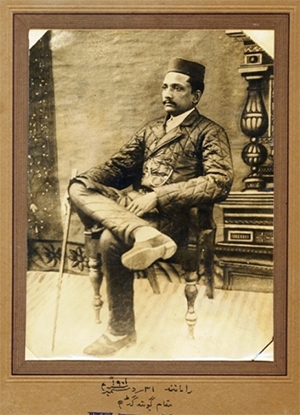
A Kayastha employee of the political agent of the Bagelkhand Agency 1901.
During the British Raj, Kayasthas continued to proliferate in public administration, qualifying for the highest executive and judicial offices open to Indians.[49][page needed]
Bengali Kayasthas took on the role occupied by merchant castes in other parts of India and profited from business contacts with the British. In 1911, for example, Bengali Kayasthas and Bengali Brahmins owned 40% of all the Indian-owned mills, mines and factories in Bengal.[50]
Modern India
The Chitraguptavanshi Kayasthas, Bengali Kayasthas and CKPs were among the Indian communities in 1947, at the time of Indian independence, that constituted the middle class and were traditionally "urban and professional" (following professions like doctors, lawyers, teachers, engineers, etc.) According to P. K. Varma, "education was a common thread that bound together this pan Indian elite" and almost all the members of these communities could read and write English and were educated beyond school.[51]
The Kayasthas today mostly inhabit central, eastern, northern India, and particularly Bengal.[52] They are considered a Forward Caste, as they do not qualify for any of the reservation benefits allotted to Scheduled Castes and Scheduled Tribes and Other Backward Classes that are administered by the Government of India.[53] This classification has increasingly led to feelings of unease and resentment among the Kayasthas, who believe that the communities that benefit from reservation are gaining political power and employment opportunities at their expense. Thus, particularly since the 1990 report of the Mandal Commission on reservation, Kayastha organisations have been active in areas such as Bihar, Madhya Pradesh, Bengal and Orissa. These groups are aligning themselves with various political parties to gain political and economic advantages; by 2009 they were demanding 33 percent reservation in government jobs.[54]
Sub-groups
Chitraguptavanshi Kayasthas
Main article: Chitraguptavanshi Kayastha
The Chitraguptavanshi Kayasthas of Northern India are named thus because they have a myth of origin that says they descend from the 12 sons of the Hindu god Chitragupta, the product of his marriages to Devi Shobhavati and Devi Nandini.[19] The suffix -vanshi is Sanskrit and translates as belonging to a particular family dynasty.[55]
At least some Chitraguptavanshi subcastes seem to have formed by the 11th or 12th century, evidenced by various names being used to describe them in inscriptions.[56] Although at that time, prior to the Muslim conquests in the Indian subcontinent, they were generally outnumbered by Brahmins in the Hindu royal courts of northern India, some among these Kayasthas wrote eulogies for the kings. Of the various regional Kayastha communities it was those of north India who remained most aligned to their role of scribes, whereas in other areas there became more emphasis on commerce.[57][58]
The group of Bhatnagar, Srivastava, Ambashtha and Saxena of Doab were classified by various Indian, British and missionary observers to be the most learned and dominant of the "service castes".[59]
Bengali Kayasthas
Main article: Bengali Kayastha
In eastern India, Bengali Kayasthas are believed to have evolved from a class of officials into a caste between the 5th-6th centuries and 11th-12th centuries, its component elements being putative Kshatriyas and mostly Brahmins. They most likely gained the characteristics of a caste under the Sena dynasty.[60] According to Tej Ram Sharma, an Indian historian, the Kayasthas of Bengal had not yet developed into a distinct caste during the reign of the Gupta Empire, although the office of the Kayastha (scribe) had been instituted before the beginning of the period, as evidenced from the contemporary Smritis. Sharma further states:
Noticing brahmanic names with a large number of modern Bengali Kayastha cognomens in several early epigraphs discovered in Bengal, some scholars have suggested that there is a considerable brahmana element in the present day Kayastha community of Bengal. Originally the professions of Kayastha (scribe) and Vaidya (physician) were not restricted and could be followed by people of different varnas including the brahmanas. So there is every probability that a number of brahmana families were mixed up with members of other varnas in forming the present Kayastha and Vaidya communities of Bengal.[61]
Chandraseniya Prabhu Kayasthas
Main article: Chandraseniya Kayastha Prabhu
In Maharashtra, Chandraseniya Kayastha Prabhus (CKP) claim descent from the warrior Chandrasen.[62] Historically they produced prominent warriors and also held positions such as Deshpandes and Gadkaris (fort holder, an office similar to that of a castellan.[63] Traditionally, the CKPs have the upanayana (thread ceremony) and have been granted the rights to study the vedas and perform vedic rituals along with the Brahmins.[64]
Karanas
Main article: Karan (caste)
Karana is a caste found predominantly in Odisha and Andhra Pradesh. They are a regional subcaste of Kayastha and traditionally they were the official record-keepers in the royal courts during Medieval times. They represent around 5% of Odia people. The Karanas are a forward caste of Odisha.[65]
Varna status
As the Kayasthas are a non-cohesive group with regional differences rather than a single caste, their position in the Hindu varna system of ritual classification has not been uniform.
This was reflected in Raj era court rulings. Hayden Bellenoit gives details of various Raj era law cases and concludes the varna Kayastha was resolved in those cases by taking into account regional differences and customs followed by the specific community under consideration. Bellenoit disagrees with Rowe, showing that Risley's theories were in fact used ultimately to classify them as Kshatriyas by the British courts. The first case began in 1860 in Jaunpur, Uttar Pradesh with a property dispute where the plaintiff was considered an "illegitimate child" by the defendants, a north-Indian Kayastha family. The British court denied inheritance to the child, citing that Kayasthas are Dvija, "twice-born" or "upper-caste" and that the illegitimate children of Dwijas have no rights to inheritance. In the next case in 1875 in the Allahabad High Court, a north Indian Kayastha widow was denied adoption rights as she was an upper-caste i.e. Dwija woman. However, the aforementioned 1884 adoption case and the 1916 property dispute saw the Calcutta High Court rule that the Bengali Kayasthas were shudras. The Allahabad High Court ruled in 1890 that Kayasthas were Kshatriyas.[66][67] Hayden Bellenoit concludes from an analysis of those that
in the suits originating in the Bihari and Doabi heartlands rulings that Kayasthas were of twice-born status were more likely. Closer to Bengal country, though, the legal rulings tended to assign a shudra status.
Even where the shudra designation was adjudged, the Raj courts appear to have sometimes recognised that the Bengali Kayasthas were degraded from an earlier kshatriya status due to intermarrying with both shudras and slaves ('dasa') which resulted in the common Bengali Kayastha surname of 'Das'.[66] The last completed census of the British Raj (1931) classified them as an "upper caste", i.e. Dwija,[67] and the final British Raj law case involving their varna in 1926 determined them to be Kshatriya.[66]
Earlier, in Bihar, in 1811–1812, botanist and zoologist Francis Buchanan had recorded the Kayastha of that region as "pure shudra" and accordingly kept them at the par with other producer caste groups like goldsmiths, Ahirs, Kurmis and the Koeris. William Pinch, in his study of Ramanandi Sampradaya in the north describes the emergence of the concept of "pure Shudra" in growing need of physical contact with some of the low caste groups who were producer and seller of essential commodities or were the provider of services without which the self sufficiency of rural society couldn't persist. However, many of these adopted Vaishnavism in the aim to become Kshatriya. In 1901 Bihar census, Kayasthas of the area were classified along with Brahmins and Rajputs in Bihar as "other castes of twice-born rank"[68] According to Arun Sinha, there was a strong current since the end of the 19th century among Shudras of Bihar to change their status in caste hierarchy and break the monopoly of bipolar elite of Brahmins and Rajputs of having "dvija" status. The education and economic advancement made by some of the former Shudra castes enabled them to seek the higher prestige and varna status. The Kayastha along with the Bhumihars were first among the shudras to attain the recognition as "upper caste" leaving the other aspirational castes to aspire for the same.[69]
The Raj era rulings were based largely upon the theories of Herbert Hope Risley, who had conducted extensive studies on castes and tribes of the Bengal Presidency. According to William Rowe, the Kayasthas of Bengal, Bombay and the United Provinces repeatedly challenged this classification by producing a flood of books, pamphlets, family histories and journals to pressurise the government to recognise them as kshatriya and to reform the caste practices in the directions of sanskritisation and westernisation.[70][clarification needed] Rowe's opinion has been challenged, with arguments that it is based on "factual and interpretative errors", and criticised for making "unquestioned assumptions" about the Kayastha Sanskritisation and westernisation movement.[71][72]
In post-Raj assessments, the Bengali Kayasthas, alongside Bengali Brahmins, have been described as the "highest Hindu castes".[73] After the Muslim conquest of India, they absorbed remnants of Bengal's old Hindu ruling dynasties—including the Sena, Pala, Chandra, and Varman—and, in this way, became the region's surrogate kshatriya or "warrior" class. During British rule, the Bengali Kayasthas, the Bengali Brahmins and the Baidyas considered themselves to be Bhadralok, a term coined in Bengal for the gentry or respectable people. This was based on their perceived refined culture, prestige and education.[47][74]
According to Christian Novetzke, in medieval India, Kayastha in certain parts were considered either as Brahmins or equal to Brahmins.[75] Several religious councils and institutions have subsequently stated the varna status of CKPs as Kshatriya.[76][77][78]

